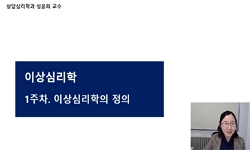국민들의 평균수명의 연장과 함께 노인인구가 크게 늘어나고 있다. 그 결과 2000년에 7.1%를 넘어서 고령화 사회에 진입하고, 2022년에는 14%를 넘어서 고령화사회가 될 전망이다. 특히 노인인구...
http://chineseinput.net/에서 pinyin(병음)방식으로 중국어를 변환할 수 있습니다.
변환된 중국어를 복사하여 사용하시면 됩니다.
- 中文 을 입력하시려면 zhongwen을 입력하시고 space를누르시면됩니다.
- 北京 을 입력하시려면 beijing을 입력하시고 space를 누르시면 됩니다.
施設老人의 身體的·心理的障碍類型에 따른 레크리에이션 프로그램 適用에 관한 硏究 : 요양원 입소노인을 중심으로 = (A) study on the application of recreation programs to the institutional aged in differentiating physical and psychological disability
한글로보기https://www.riss.kr/link?id=T7956865
- 저자
-
발행사항
광주 : 광주대학교 경상대학원, 2001
-
학위논문사항
학위논문(석사) -- 광주대학교 경상대학원 , 사회복지학과 , 2000
-
발행연도
2001
-
작성언어
한국어
-
주제어
시설노인 ; 신체적 장애 ; 심리적 장애 ; 레크리에이션 프로그램
-
KDC
338.6 판사항(4)
-
DDC
362.6 판사항(21)
-
발행국(도시)
광주
-
형태사항
ii, 69p. : 삽도 ; 26 cm.
-
일반주기명
참고문헌수록
- 소장기관
-
0
상세조회 -
0
다운로드
부가정보
국문 초록 (Abstract)
국민들의 평균수명의 연장과 함께 노인인구가 크게 늘어나고 있다. 그 결과 2000년에 7.1%를 넘어서 고령화 사회에 진입하고, 2022년에는 14%를 넘어서 고령화사회가 될 전망이다. 특히 노인인구의 비율이 7%에서 14%로 배가되는 기간이 22년밖에 걸리지 않을 것으로 전망되고 있다. 이는 오랜 기간에 걸쳐 인구고령화에 대처해 온 선진국과는 달리 우리 나라의 경우 고령화사회에 대한 준비가 그만큼 시급함을 의미한다.
노인문제로 경제적 생활 어려움, 만성질환 등 건강문제, 사회적 역할 상실에 따른 고독, 소외감 노인들의 여가 및 사회참여를 들 수 있는데 그 중에서도 여가활동에 관한 사회적 관심은 상대적으로 낮은 것으로 보여진다.
현대사회는 평균수명 연장, 소득수준 향상 등으로 건강한 노인들의 사회참여 욕구 증대와 함께 노후를 보다 풍요롭고 안락하게 보낼 수 있는 각종 여가 및 주거시설에 대한 욕구가 크게 증대하고 있으나 이러한 욕구를 충족시킬 수 있는 사회적 여건이 미흡하고 각종 여가 및 주거 시설이 부족하다.
본 연구에서는 문헌조사를 하여 노인의 신체적, 심리적 관련 부분과 여가 및 레크리에이션 선용에 관한 기준의 연구자료를 조사하였다. 노인을 위한 여가선용방법과 활용중인 레크리에이션에 관한 조사를 하였다.
현지조사는 노인요양원에 수용노인들의 신체적, 정신적 노인심리와 성격유형을 분류하여 각각 유형에 적합한 레크리에이션의 형태를 파악해보는 현지조사와 관찰을 실시하여 요양원 수용노인의 신체적 심리적 형태에 적합한 조사에 효과가 있는 레크리에이션 모형을 만들어 제시하였다.
다국어 초록 (Multilingual Abstract)
This study is focused on the recreation rpreferences of the institutional aged by the physical and psychological distincts. The increases in the numbers and its life times are the continual characteristics in modern Korea. The ageing took 7.1% of the ...
This study is focused on the recreation rpreferences of the institutional aged by the physical and psychological distincts. The increases in the numbers and its life times are the continual characteristics in modern Korea. The ageing took 7.1% of the total population in the year of 2000 is called high aging society will be reached at 14% in 2022. The progressing rate of aging is faster than any other advanced countries in the world, such as USA, Sweden, UK, Japan, etc. This means Korea must hurry to prepare for the aged society.
The problems of ageing society are economic deficients, health problem including chronic diseases, loneliness, isolation, recreation and leisure and social participation. It seems to be the less concerned problems is the issue of recreation and leisure.
Due to the lengthening life expectancy and income increases, the old wants more comfortable and abundant recreation and residence facilities. However, there is not enough kinds of recreation and residential utilities and even social concerns and conditions are not ready to fulfill the need of the aged people.
By employing the bibliographic reaearch methods, overlooked the previous studies on the physical and psychological development of the aged. And, summarized and compared leisure activities nad recreation programs participation, especially in the institutional care. Main question is what kind of recreastion program does fit to the aged under the care of institutional care facilities.
Field study was executed in a welfare institution and models exercised, applied, and field experimented, in its application of new recreation program to the aged. The types of personal character were variable to the fittest motionable and executionable recreaion programs formed. The results produced several program models, which is more easily adaptable to the institutional care aged.
목차 (Table of Contents)
- 목차
- 국문요약
- 제1장 서론 = 1
- 제1절 문제의 제기 = 1
- 제2절 연구의 목적 = 2
- 목차
- 국문요약
- 제1장 서론 = 1
- 제1절 문제의 제기 = 1
- 제2절 연구의 목적 = 2
- 제3절 연구방법 및 한계 = 4
- 제2장 노인복지와 여가 = 5
- 제1절 노인의 사회심리적 특성 = 5
- 1. 심리적 발달의 특성 = 6
- 2. 노인의 성격유형 = 8
- 3. 노화심리 = 8
- 4. 인지능력의 변화 = 12
- 5. 노인의 생리적·심리적·사회적 특성 = 13
- 제2절 노인과 여가 = 14
- 1. 노인의 여가생활 = 14
- 2. 노인여가문제와 여가시설공간의 부족 = 15
- 제3장 여가와 레크리에이션 = 21
- 제1절 여가와 레크리에이션 = 21
- 1. 여가 = 21
- 2. 레크리에이션 = 26
- 3. 레크리에이션 유형 = 31
- 4. 치료레크리에이션 = 32
- 제4장 노인의 신체, 심리적 장애유형에 따른 레크리에이션 = 42
- 제1절 노인 및 장애인의 레크리에이션 = 42
- 1. 노인을 위한 레크리에이션 = 42
- 2. 장애인을 위한 레크리에이션 = 45
- 제2절 장애노인을 위한 게임 = 47
- 1. 장애인에 대한 에티켓 = 47
- 2. 정서장애노인 = 50
- 3. 신체장애노인 = 52
- 4. 정신장애·치매노인 = 54
- 5. 시각장애노인 = 56
- 6. 청각장애노인 = 58
- 7. 언어장애노인 = 61
- 제5장 결론 = 64
- 참고문헌 = 67
- ABSTRACT = 69








